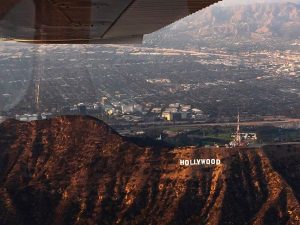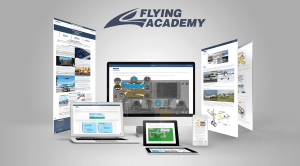What is the Private Pilot License – PPL(A)?
- PPL(A) is regarded as a “recreational license”
It is a qualification that allows the holder to fly as pilot-in-command (PIC) or co-pilot on aircraft in noncommercial operations without remuneration. - PPL(A) allows you to fly on single engine land (SEL) aircraft in visual meteorological conditions (VMC) under Visual Flight Rules (VFR)
- The Private Pilot License is the first step towards becoming a professional pilot.
To find out more about how to become a professional pilot, please click here.
Private Pilot License – PPL(A) training description:
- The training is designed for applicants with 0 flight experience
The Private Pilot License training is designed for applicants without any previous flight experience who want to obtain the PPL(A). - The PPL(A) course consists of both theoretical and practical training
Theoretical preparation and practical training are done concurrently – we offer the perfect combination of both without wasting your time. - The course is concluded by a written exam, an oral examination and a practical examination (Check Ride).
- The Private Pilot License training can be started anytime.
You can start the PPL(A) course anytime you are ready. All the lessons will be planned individually for you to suit your time requirements. - The Private Pilot license can be obtained in a minimum period of 8 weeks.
The duration of PPL(A) training will depend on the each trainee’s time availability for both the theoretical and the practical training. - Use of electronic study materials
You can use the school’s iPad which includes ForeFlight during your light.
What are the Private Pilot License course entry requirements?
- To be at least 16 years old
You need to be at least 16 years old (license can be issued only at the age of 17 years). - To have at least Class 3 Medical
You need to be physically fit for recreational flying and capable of holding a Pilot Medical Certificate Class 3. Our school will assist with the procedure. - To be proficient in the English language
You need to be able to read, write, understand and speak English in a fluent way.
Federal Aviation Administration (FAA) Aviation English Language Standard (AELS).
An individual who holds an FAA certificate or an applicant for an FAA certificate or rating, per the eligibility requirement of the respective certificate, should continuously demonstrate the ability to read, write, speak, and understand the English language.
How can I get my Private Pilot License – PPL(A)?
You can do so through an FAA authorized school. Flying Academy is a flight school authorized by the FAA (Federal Aviation Administration) in the United States. We are a Part 141 and Part 61 certified school.
What is the difference between Part 141 and Part 61 flight training?
- The difference in between Part 141 and 61 is the number of Flying Hours and ground lessons. In part 141 you will be required to do more ground classes than in part 61. On the other hand, Part 61 requires more Flying hours than Part 141.
- Both Part 141 and Part 61 are equally valid under FAA regulations and there is no specific preference by the airlines.
Step 1: Start the Ground and Flight training
The ground and Flight training are combined during the whole preparation in obtaining the
Private Pilot Certificate.
Ground training
The Ground training is the theoretical part of the training that takes place in the classroom and is taught by our flight instructors, certified by the FAA. In order to complete the Private Pilot License under Part 141, there is a minimum requirement of 35 hours of ground training.
The Ground Training is divided into 3 stages and will cover the following topics. During the ground school training, the student will have 3 exams, one for each stage.
- Discovering Aviation
- Airplane Systems
- Aerodynamic Principles
- The Flight Environment
- Communications and Flight Information
- Stage I exam
- Meteorology for Pilots
- Federal Aviation Regulations
- Interpreting Weather Data
- Presolo exam
- Airplane Performance
- Navigation
- Stage II exam
- Human Factor Principles
- Flying Cross Country
- Stage exam III
The student will obtain the aeronautical knowledge and obtain the prerequisites in the FAR/AIM for the FAA Private Pilot Airman Knowledge test.
Flight Training
The Flight Training will take place in a Single Engine Land airplane. This training will also be divided into three stages and will have three stage flight texts. The student will obtain the necessary aeronautical skill and experience necessary to meet the requirements for a private pilot certificate.
In order to obtain a Private Pilot License, the student must complete a minimum of 35 hours of flight under Part 141 and a minimum of 40 hours of flight under Part 61.
PART 141:
- 35 hours minimum total time.
- 5 hours of solo flight minimum, including local and cross country. One cross country of more than 50 NM and another of 100 NM.
- One night cross country dual.
PART 61:
- 40 hours minimum total time
- 10 hours of solo flight minimum, including local and cross country. One cross country of more than 50 NM and another of 100 NM.
- One night cross country dual.
Flight training for FAA Part 141 PPL(A) with Flight Instructor:
- 25 hours – Basic maneuvers, emergency procedures, take-offs and landings etc.
- 5 hours – Navigation cross-country
Total of 30 hours with Flight Instructor
Flight training for FAA Part 141 PPL(A) solo:
- 5 hours – Solo flights under ground supervision of the FI; Solo navigation cross-country flights, one of 100 NM with full stops at two different airports other than departure airport
Total of 5 hours solo + extra minimum of 1 hour for final check-ride with FAA examiner.
Flight training for FAA Part 61 PPL(A) with Flight Instructor:
- 25 hours – Basic maneuvers, emergency procedures, take-offs and landings etc.
- 5 hours – Navigation cross-country
Total of 30 hours with Flight Instructor
Flight training for FAA Part 61 PPL(A) solo:
- 10 hours – Solo flights under ground supervision of the FI; Solo navigation cross-country flights, one of 100 NM with full stops at two different airports other than departure airport.
Total of 10 hours solo + extra minimum of 1 hour for final check-ride with FAA examiner
Step 2: Pass the theoretical examination before the Check-ride
Towards the end of the course, you will have to demonstrate a sufficient level of theoretical knowledge at an FAA approved testing center in the form of a written test. The test consists of nine subjects (Basic Aerodynamics, Aircraft Systems, Flight Instruments, Regulations, Procedures and Airport Operations, Weather, Weather Service, Aircraft Performance, Enroute Flight, Navigation, Communication Procedures).
To pass the PPL(A) theoretical examination you need to achieve a score of at least 70%, which is still a passing score. This must be done before the Check-ride.
Step 3: Pass the Check-ride
The final aeronautical knowledge and practical test is the check-ride. It will be taken at the end of all the training and consist of an oral and practical exam. Once the student passes this exam, he/she will obtain the Private Pilot License. The length of the Check Ride varies depending on the FAA examiner.
How much does the Private Pilot License – PPL(A) course cost?
The course price starts from 6545 USD.
No taxes are applied for pilot training in Florida.
The FAA PPL(A) program fee covers the following items and services:
- Flight Instructor time for ground & practical training
- Airplane usage, including fuel.
- Bonus – account for RocketRoute flight planning services – valued $300/year
*All training fees are bound to the actual exchange rates of the local currency of the Flying Academy base where the training or a part of the training is provided. Learn more about complete training fees.
How long does it take to complete Private Pilot License – PPL(A) – training?
The PPL(A) can be obtained in a range period starting from 2 months depending on the trainees time availability for both theoretical and practical training.




